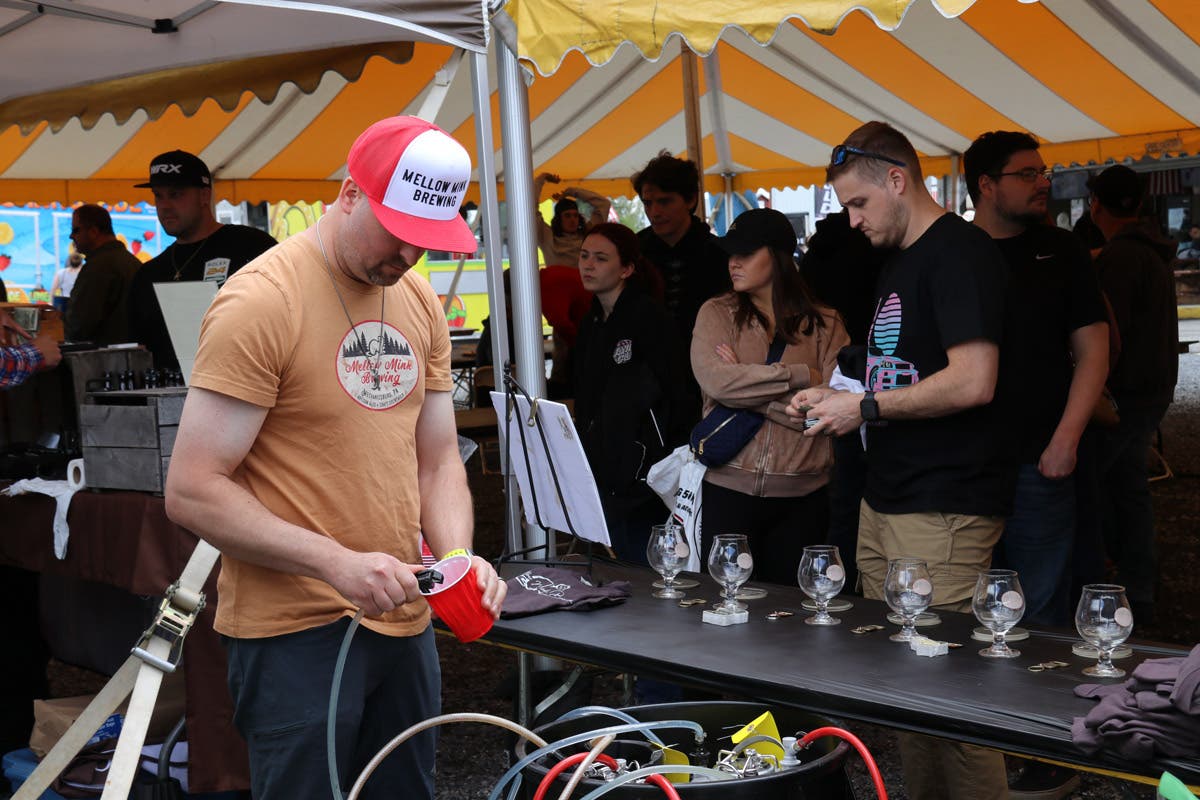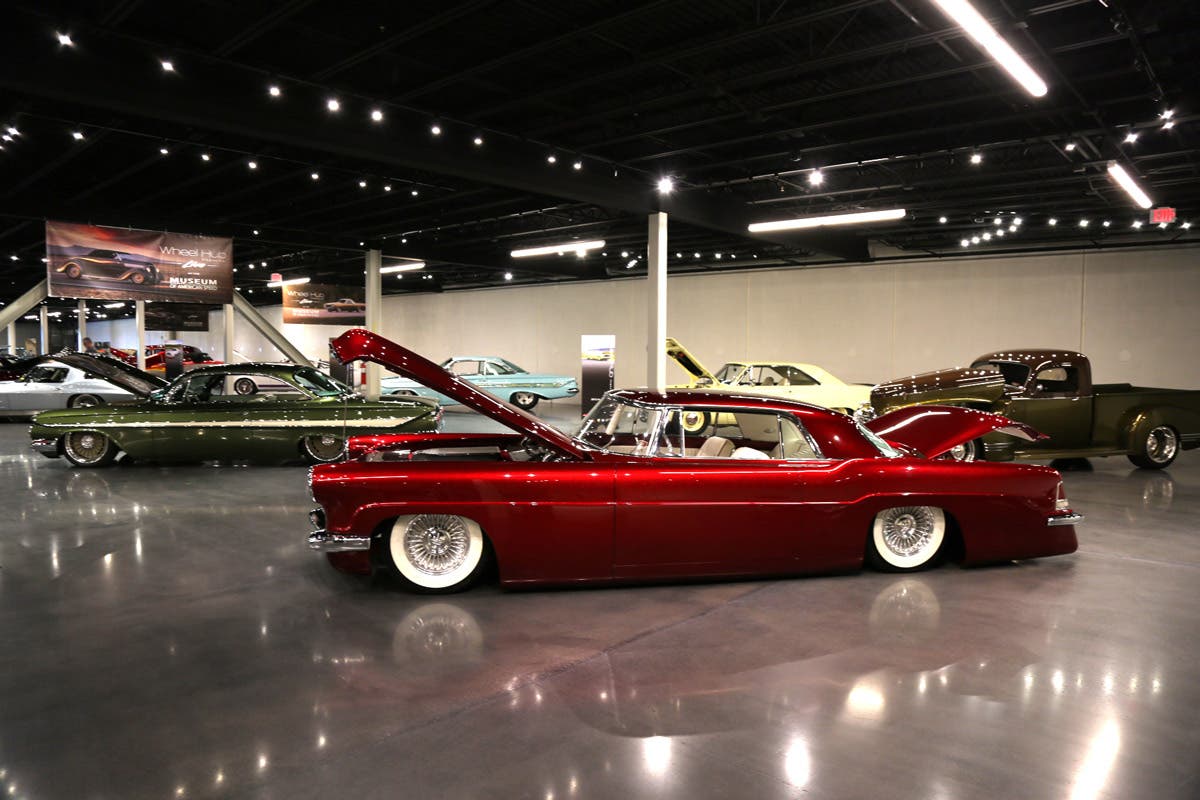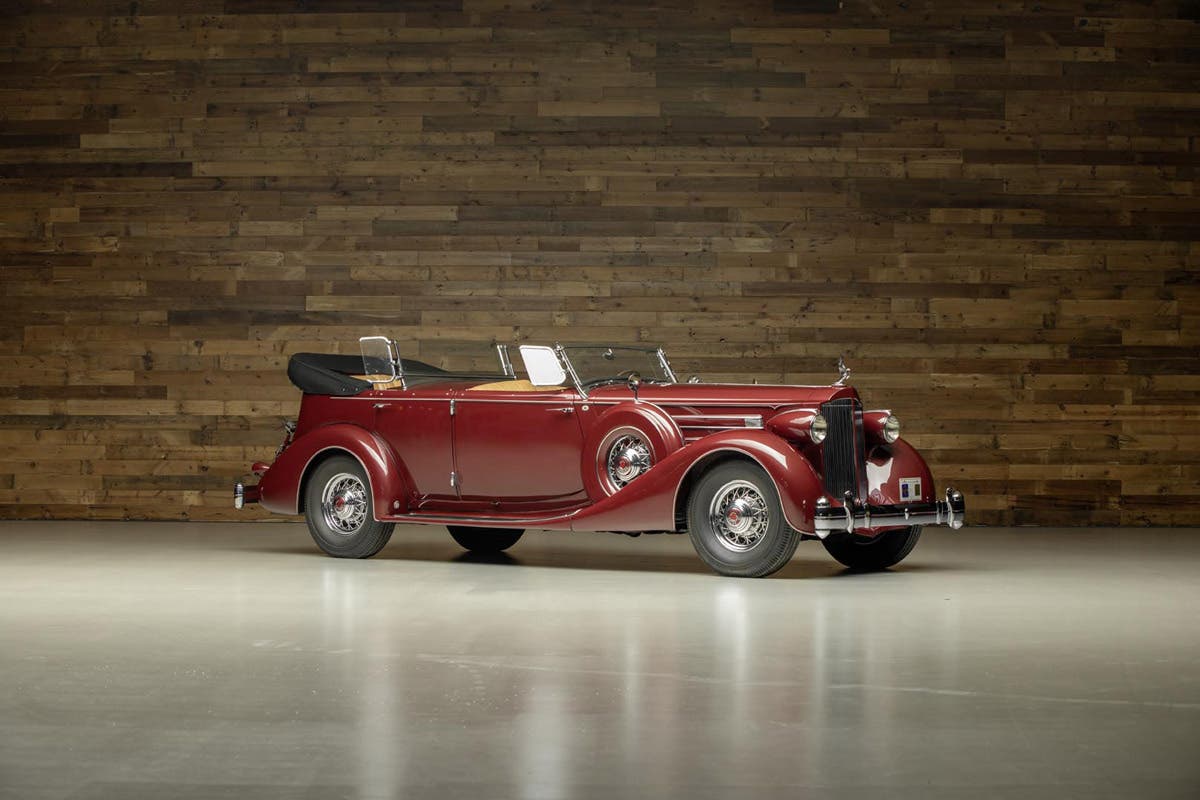Photos by Al Rogers; story by John Gunnell
A racer’s race car: Shelby GT-350
Racer Bobby Rahal won Indy championships in 1986, 1987 and 1992. In 1986, he took the Indy 500. He won there again as a team owner in 2004. After he quit racing, Rahal ran a chain of car dealerships in Pennsylvania. In 2009, he decided to look for a Shelby ‘65 GT-350 to replace the one he lost in a divorce.
Racing buddies hooked Rahal up with Chad Odum, who had a restorable Shelby for sale in southern California. The car had suffered from sitting outside the original owner’s garage for 30 years, but all the bits were there. It was also the fourth from last ’65 built. Don Hoevel, former crew chief for Newman-Haas Racing, started restoring it in 2011. The car was restored with its original parts (even factory paint flaws) or with date-coded replacements.
Performance Restoration handled body and paint. The car went to the 2012 Hilton Head concours and took Best in Class. Hoevel has maintained the GT-350 at his shop since then and shows it. He rates it among the top 10 restored ’65 Shelbys in America. Rahal says a first-year model is the way to go.
K-code ’65 bought from first owner
George Magro loved Mustangs since he was in college and had a coupe with a three-speed. The Mustang expert found this original K-code convertible in Columbia, S.C., in the hands of its original owner, who bought it in September 1964 and still had the window sticker and documentation. Magro found the K-code VIN stamped on the block and transmission.
Magro brought the 95,000-mile car back to Michigan and had it dip stripped and E-coated. Every piece of metal was original. There was negligible rust. The restoration was a six-month full-time job. No one reproduced the Palomino interior color. “We took the original dash pad off and turned it inside out to get a match,” Magro said. “We had paint made and it’s the paint NPD sells now.”
The car’s new owner gave Magro the OK to do it right. The body is the original Raven Black, which contrasts nicely with the Palomino seats and tan top. The car has no GT stripes since it was a September 1964 build and GT items were not available until mid-April 1965. It has the Rally-Pac option, which is invoiced on the window sticker.
Lost and found magazine project car
Chris Bolla’s Wimbeldon White 1966 Mustang GT convertible has the 4V 289 V-8 and four-speed manual transmission. A blue-and-white deluxe Pony interior includes a console, Rally-Pac gauges and factory A/C. Other options on the car include a white power-operated top, blue GT stripes, power steering, a trunk luggage rack and the factory GT package with original styled steel wheels.
Not much that happened to the car before 1979 is known. Then, it was purchased by Mustang Monthly founder Larry Dobbs. The GT became a project car in the publication and appeared in a series of “how to” articles between October 1979 and July 1980. It was the magazine’s first project car.
The ragtop was displayed at the Mustang Club of America grand national meet that year. It was sold shortly thereafter. Bolla found it in 2009 at a classic car dealership near Atlanta, Ga. The dealer had no idea of the car’s history.
Donald Farr, the former editor of Mustang Monthly, has seen the car and verified its authenticity. The magazine project car has been maintained in the state it was restored to in 1979, with maintenance items only fixed or replaced.
Shelby Super Snake
Ford enlarged the ’67 Mustang partially for the sake of accepting big-block V-8s. Carroll Shelby went further with his GT500 and its modified 428-cid, 355-hp Police Interceptor engine. He was Goodyear’s West Coast distributor and picked the GT500 for an extended high-speed tire demo to promote a new Thunderbolt economy tire. Ex-Shelby sales manager Don McCain suggested a super version with a 427 race engine. Shelby wanted to make 50 copies for Mel Burns Ford in Long Beach.
Shelby chief engineer Fred Goodell turned the No. 544 GT500 into a Super Snake with Thunderbolt tires, a lightweight 427 and other goodies. Essentially, it had a GT40 MKII engine and hardware designed to hold up at 6,000 rpm. Goodell used one-off chrome inboard headlight surrounds and worked out a neat twist on production Le Mans striping with two narrow stripes flanking a wide center stripe. The Super Snake stood apart from all other GT500s.
The car was driven 500 miles averaging 142 mph. The skinny Thunderbolt tires performed perfectly. Due to high costs, the Super Snake was never duplicated. It passed through several hands until Richard Ellis of Illinois bought and restored it. It traded hands again at Mecum’s Ellis Collection sale.
High on the High Country Special
Todd Elledge clearly loves the ’68 High Country Special Mustang he bought a dozen years ago. “My car is one of 231 made in 1968,” he said. “High Country Specials were also made and sold in ’66 and ’67.” They were sold in the Denver, Colo., market. It spawned the 1968 California Special, which was basically the same car built for the California market.
Elledge’s car was a Pennsylvania barn find. “When I found it, I didn’t know what I was looking at,” Elledge admits. “My son Keith is a Mustang enthusiast and he told me it was rare. There’s only one other one in Pennsylvania; it’s in Philadelphia. Marti Report says mine is the only one made with a red console.”
The car is not a GT. It is Candy Apple Red with white stripes, the 4V 302-cid V-8, automatic transmission and red bucket seats. Elledge bought it from a lady in Pennsylvania who was the second owner. This Mustang is scheduled to be in Carlisle Event’s Mustang 50th Anniversary event. Bob Teets of Arvada, Colo., maintains the High Country Special Registry at (www.californiaspecial.com).
Timing was right for ’68 Shelby buyer
In spring 2009, Ken Nagel was seeking a Shelby and remembered one from the 2007 Chicago World of Wheels Show. He had notes on the car and contacted owner Dennis Neva. “I told him I wanted to buy a Shelby,” Nagel recalled. “He had just decided to sell his.” Nagel bought the car and gave it a 2-1/2-year restoration using NOS parts and painstaking attention to detail.
Nagel learned the car was slated for production at Ford’s plant in Metuchen, N.J., on May 21, 1968, but rolled off the line two days later. It was shipped to Ionia, Mich., for “Shelbyization” before going to Jim Aikey Ford in Des Planes, Ill.
The ’68 Shelby Cobra GT500KR was a midyear introduction car based on the 1968 Shelby GT500. Ford added “Cobra” to the Shelby’s moniker to help usher in the beginning of a new performance era at the company. “Cobra” referred to the new 428 Cobra Jet V-8 that was fitted under the KR’s custom fiberglass hood. It was the engine that would once again vault the Mustang to the head of the pack.
Big numbers from small cubes
The Boss 302 was Ford’s Trans-Am racer. It had a beefed-up 302, a stronger crank and redesigned “Cleveland” cylinder heads. A stock Boss 302 could do 0-to-60 mph in less than 7 seconds and nudge the century mark in the quarter-mile.
The Boss can be recognized by matte black paint on its hood and trunk, Boss 302 names on its sides, a front spoiler, styled steel wheels and lack of a side scoop. Its equipment includes front disc brakes and a four-speed manual transmission. The optional rear spoiler was obviously decorative.
The Boss 302 had exceptionally good street manners — although the firm suspension did broadcast tar strips and other pavement irregularities. This model came with a standard Mustang interior featuring the “park bench” rear seat.
According to former owner Rick Campbell, this Boss 302 was purchased new by Chrysler Corp. in 1969. Chrysler used it to help develop the ’Cuda AAR Challenger T/A for Trans-Am Racing. All of the original paperwork has remained with the car since new. This car was awarded the Authenticity Award by the Mustang Club of America, and it is the first and only Boss 302 to ever win this coveted award. It retains all of its original drivetrain and has only 13,000 original miles.
One of the last first-run Shelbys
Car collector Richard Ellis has loved automobiles since growing up in central Illinois. He spent more than two decades as a consultant and auctioneer for Rock Island Auction Co., the top firearms auction house in the world. He lived in central Illinois with his wife, Pam, who shared his love for cars. Pam’s first car was a 1969 Mustang coupe that she helped her uncle paint.
Carroll Shelby’s contract with Ford ended in 1969 and he decided not to extend it. He wanted to move away from modifying production cars and instead design his own automobile. Ford kept making the GT500 model, with cosmetic changes from the former Shelby product for the new model year. After Ford decided to drop the GT500, the unsold cars were sold as 1970 models.
One Mustang that Richard Ellis owned was a 1970 Shelby GT500 that was an original, unrestored, low-mileage survivor. It had been owned by Ford Motor Co. and was used only as a promotional car. This GT500 was one of three Ellis cars that appeared at Pebble Beach as part of a 45th anniversary tribute honoring Carroll Shelby and Shelby Automobiles.
Every Mustang tells a story
Every classic Mustang owner has a story. Jeff Luptowski’s began when he purchased his 1972 Mach 1 at Holt Auto Sales in Lansing, Mich., in July 2009. He was able to find the previous owner who brought the car from Florida and traded it to Holt. “He told me it was a numbers matching car that might have once been sold at a Mecum auction,” says Luptowski. “During its 2004 restoration, a functional ram air system, air conditioning and an vintage AM/FM radio updated with CD player were installed. Functional ram air and air conditioning were not factory offered, because they would pass government emissions tests in 1972.”
Under the hood of the SportsRoof is an R-code 351 HO V-8 attached to a “Toploader” four-speed transmission with a Hurst shifter. It has bucket seats, a full console, a factory gauge package, a rear deck lid spoiler and a Traction-Lok differential. The body color is bright red and the interior is a Sebring knit/corinthian vinyl combination in vermilion.
To round out the story, the car was built May 9, 1972, in Dearborn, Mich. The Philadelphia Ordering District had it built for Rudy Valentino Ford in Upper Darby, Pa.
Like Mustang father, like Mustang son
Bill Miller loves the Mustang. “I grew up in a Ford family,” he said. “My dad was a stylist who helped create the Mustang. I owned a ’72 Mustang Mach 1 when my wife, Meg, and I were dating. That car went away when we started our family. After the kids were grown, we got interested in owning a classic Mustang.”
Miller found a ’73 convertible. “My wife wanted a convertible,” says Miller. It was an original, one-owner car that a retired Ford Engineer obtained from a Ford’s executive lot. The moment the couple saw it, they knew it was the car for them. A good friend owned a Grabber Orange ’70 Boss 302, and “We loved that color,” Miller explained. “We decided to paint ours Grabber Orange and add personal touches.
The car was bead blasted and redone with stripes, two-tone paint, a Mach 1 grille and spoilers. “We love traveling to shows and cruises around Michigan,” says Miller. The car has a 351-C 2V V-8, FMX automatic, white Comfortweave bucket seats, a black convertible top, “hockey stick” stripes, a NASA Ram Air hood and Magnum 500s. It was a top 25 car at the Frankenmuth Autofest.








